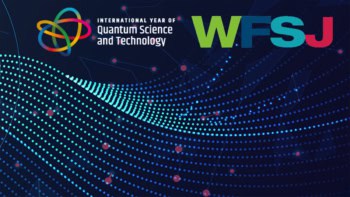Mark Wrigley describes what it’s like taking part in a science festival on an island with just 50 inhabitants and a unique breed of seaweed-eating sheep

Sometimes, you just have to follow your instincts and let serendipity take care of the rest.
North Ronaldsay, a remote island north of mainland Orkney, has a population of about 50 and a lot of sheep. In the early 19th century, it thrived on the kelp ash industry, producing sodium carbonate (soda ash), potassium salts and iodine for soap and glass making.
But when cheaper alternatives became available, the island turned to its unique breed of seaweed-eating sheep. In 1832 islanders built a 12-mile-long dry stone wall around the island to keep the sheep on the shore, preserving inland pasture for crops.
My connection with North Ronaldsay began last summer when my partner, Sue Bowler, and I volunteered for the island’s Sheep Festival, where teams of like minded people rebuild sections of the crumbling wall. That experience made us all the more excited when we learned that North Ronaldsay also had a science festival.
This year’s event took place on 14–16 March and getting there was no small undertaking. From our base in Leeds, the journey involved a 500-mile drive to a ferry, a crossing to Orkney mainland, and finally, a flight in a light aircraft. With just 50 inhabitants, we had no idea how many people would turn up but instinct told us it was worth the trip.

Opening doors with outreach: using your physics skills to engage, inspire and break down barriers
Sue, who works for the Royal Astronomical Society (RAS), presented Back to the Moon, while together we ran hands-on maker activities, a geology walk and a trip to the lighthouse, where we explored light beams and Fresnel lenses.
The Yorkshire Branch of the Institute of Physics (IOP) provided laser-cut hoist kits to demonstrate levers and concepts like mechanical advantage, while the RAS shared Connecting the Dots – a modern LED circuit version of a Victorian after-dinner card set illustrating constellations.

Despite the island’s small size, the festival drew attendees from neighbouring islands, with 56 people participating in person and another 41 joining online. Across multiple events, the total accumulated attendance reached 314.
One thing I’ve always believed in science communication is to listen to your audience and never make assumptions. Orkney has a rich history of radio and maritime communications, shaped in part by the strategic importance of Scapa Flow during the Second World War.

The Orkney Wireless Museum is a testament to this legacy, and one of our festival guests had even reconstructed a working 1930s Baird television receiver for the museum.
Leaving North Ronaldsay was hard. The festival sparked fascinating conversations, and I hope we inspired a few young minds to explore physics and astronomy.
- The author would like to thanks Alexandra Wright (festival organizer), Lucinda Offer (education, outreach and events officer at the RAS) and Sue Bowler (editor of Astronomy & Geophysics)



